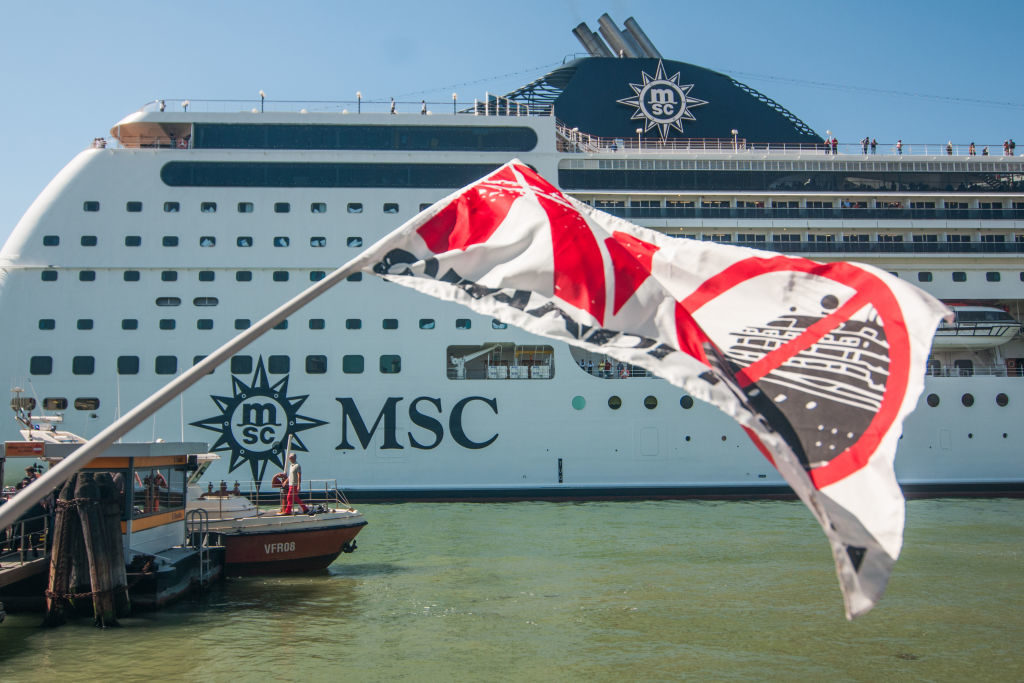Art World
The City of Venice Finally Has a Solution to Keep Giant Cruise Ships Out of Its Vulnerable Historic Canal Once and for All
Large ships will have to dock miles away from the city center until a permanent solution is implemented.

Large ships will have to dock miles away from the city center until a permanent solution is implemented.

Caroline Goldstein

When it comes to historic Venice, the ship may have finally sailed—and that’s good news for preservationists.
The Italian government issued a ruling on Wednesday that container vessels and cruise ships are no longer permitted to dock near Venice’s city center. The decision follows a series of deadly collisions, years of protest, and a similar ruling in 2019 that was not consistently enforced.
Culture Minister Dario Franceschini hailed the move, noting that visitors to the lagoon city have been “shocked to see these ships, hundreds of meters long and as tall as apartment buildings, passing through such fragile places.” Large vessels also funnel tons of pollution to the area and erode the foundation of the city, which contributes to the flooding of historic landmarks like St Mark’s Square.
In a statement, Enrico Giovannini, the city’s minister of sustainable infrastructures, said that the organization would launch a competition to gather ideas for a permanent solution to the problem, taking into consideration the technical and economic challenges of constructing new ports. The minister has called a meeting with the mayor of Venice and president of the Veneto region next week to discuss future plans.
In the meantime, ships weighing more than 40,000 gross tons will be forced to berth at the Marghera Port, an industrial docking station about six miles away from St Mark’s.
The large ships aren’t just an eyesore—they also pose a danger to those visiting the city as well as those operating the ocean liners. In 2012, the 114,500-ton Costa Concordia ship sank off of the coast of Giglio, a Tuscan island, resulting in 32 deaths. That incident prompted the government to try and ban ships weighing over 96,000 gross tons from the Giudecca Canal, but the decision was overturned by a regional court.
In 2017, the city considered a proposal for ships to dock at Marghera Porto, but later abandoned it. Two years later, a cruise ship rammed into a dock and tourist boat in Venice, injuring four people. After that incident, which mayor Luigi Brugnaro described as a tragic near-miss, authorities attempted to divert cruise ships away from the Giudecca Canal, but the plan was never fully operational.
For decades, Venice has been been debating the economic costs and benefits of cruise ships in particular and mass tourism in general. Venice attracts 25 to 30 million foreign visitors per year, according to the Italian tourist bureau. The local population is only 50,000 citizens.
Since the pandemic began, cruise ships have not been able to enter Venice, during which time water quality in the lagoon improved notably, reports the BBC. In a statement published by Reuters, the Venice government said that the ultimate goal is to “reconcile the needs to protect the artistic, cultural, and environmental heritage of Venice and its lagoon with those related to cruise activity and goods traffic.”